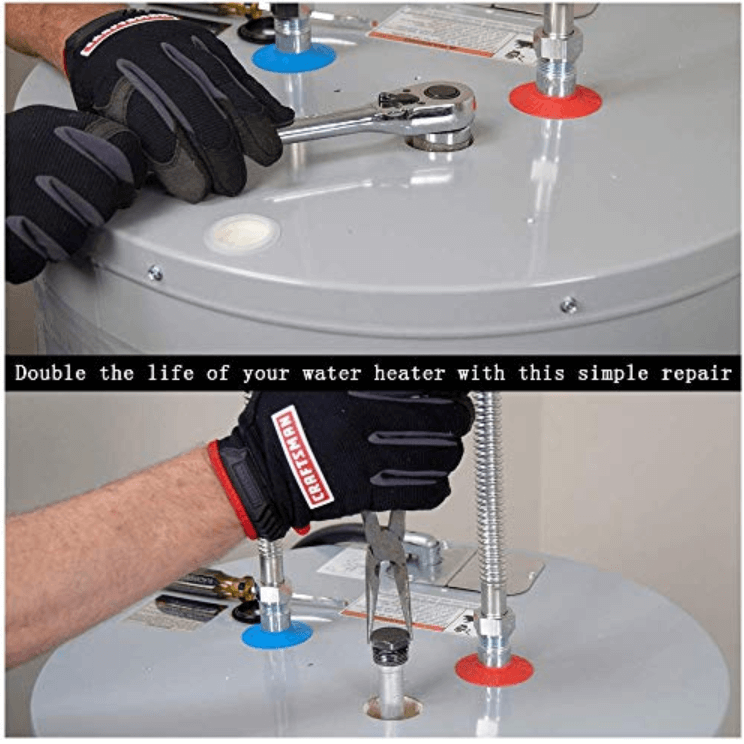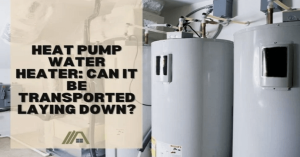I am not confident about you, but I do not like to hear ominous dripping or see the flood of a burst water heater. The good thing is it cannot happen often, and the main reason behind it is the little accessory called an anode rod.
Anode rods can serve as a hero in your hot water supply as they are self-sacrificing. I would consider them necessary, even though they do not add any functionality to the heater.
Water heaters can work without anode rods, but their function is to preserve the quality of the water and also increase the lifespan of the heater. A water tank will leak, corrode or even burst if it is without anode rods. They are manufactured to deteriorate, so they will be changed in order to work.
Water Heaters Work Without Anode Rods
Water heaters have elements that can generate heat and cause high temperatures to warm water that touches these elements. Waters heaters add heat to these elements with electricity or gas and at times, using solar power.
The heaters usually come with standard storage tanks or can be tankless, but tankless water heaters do not contain anode rods, so, we will only discuss tank heaters for now.
Important Components and Their Functions
Apart from the main element that is heated, water heater does have other parts as well:
- The function of temperature-pressure relief (TPR) valve is to maintain the safe pressures and temperatures in the tank as per designed by the manufacturer. To do that, some water is drained from the tank if the temperature or pressure is too high.
- The drain valve is used to drain out the water from the heater without going through the outflow pipe.
- The metal anode rod purifies the water and it is available at the top of the tank.
- The dip tube controls the cooling of water into the tanks for gas heaters as well as electric heaters.
- Others are outflow and overflow pipes of water. The outflow pipe helps the water to enter the pipes that reaches taps when water is required in the house. The second one prevents the storage tank to become too much full.
- The thermostat helps in measuring the tank’s heat.
How Water Is Heated
The thermostat is available at the bottom of an electric heater which measures the lowering of the tank’s temperature and enables electric power to flow to and heat the element. Once it reaches the set temperature, the electricity turns off. In dual-element tanks, each comes with its own thermostat that works independently in order to heat the water.
The measurement of lower temperature in a gas heater is done by thermostat which sends the signal to the gas valve that can send gas after the confirmation from the thermocouple that the pilot light is on. once it achieves the set temperature, the gas supply is disconnected.
Both heaters will cause the warmer water to rise, making the colder water to fall to the element to become warmer.
The Function of Anode Rods
Anode rods are metal and they are produced from magnesium, aluminum, aluminum alloy or zinc.
They play an important role in drawing the corrosive substances and any sediments in the water. The anode rod remains at the top of the tank and the aim is to draw these substances to itself. While doing it, the rod is corroded rather than the metal of the storage tank.
It also keeps the rusting away from your tank that can happen due to the mixture of steel/iron, water, and oxygen in your water heater. Its life can be increased by securing your water heater tank from corrosive substances.
This is only relevant to glass-lined water heaters. Stainless steel water heaters are made with corrosion resistant so there is no need of anode rods for them.
Your anode rod will need replacement as it corrodes, it means that it prevents you from replacing your whole water heater before its time.
Every 3-5 years, your anode rod will need replacement which is a long time. This duration is shorter than you think your water heater will work.
How Anode Rods Fulfill This Purpose
According to Gold Medal Service, the anode rod does its job by having “a lower, more negative, electrochemical potential”. The reason is the more negative voltage a metal has, the more vulnerable or reactive the metal is to destroy.
The anode rod is produced from metal that is more prone than the steel of the water tank.
The anode rod will easily lose electrons with the negative voltage, that is how the reactions come, and so it will corrode rather than the tank. It also keeps other essential metal parts such as the heating elements.
When steel or iron gives up two electrons, it causes rusting. Aluminum and magnesium lose their electrons more quickly than metals like steel or iron.
Aluminum and magnesium and your tank have one thing in common, they corrode similarly, but they do it rapidly and consume the ingredients before the tank even begins.
Once corrosion begins, it boosts the destructive cycle, as corroded metal is prone to further corrosion. However, if this is occurring at the anode rod, it is not starting, at least not rapidly on your water heater tank’s surface.
What Will Happen if the Anode Rod Is Removed?
All the damage will be sent to the metal water tank, if the anode rode is removed. It will result in rust and corrosion of your tank, and it will cause your weakened tank to crack, leak, and eventually burst.
This process can take a few years, but it will happen. The lifespan of an anode rod is 3-5 years and it depends on your water quality and how frequently you use your water heater. It is a cheaper option than changing the rod.
Here are some signs that you will come across when your tank is corroding:
- The rust residue can turn your water into coppery color.
- Water can be cloudy because of the sediment building in the tank, which also use the water space. It can be expelled from the tank but it can be a sign of issues.
- Water will have a rotten odor.
- There may be strange and loud noises (popping) when the tank is heating water.
- Colder water can also present due to the inability of the tank to heat it properly with increased sediment and damaged parts.
You need to keep in mind that the warranty on your water heater will be void if the anode rod is removed (without replacement). When your water heater breaks (you will definitely see it without the anode rod), it will also impact your insurance claim as well. The impact also includes the item or structural damage that comes with it.
Additionally, if your unit has any fault, you will not get any repair or replacement from the manufacturer if you have removed the anode rod.
How Long Will the Water Heater Last Without Anode Rod?
With an anode rod and proper maintenance, your water heater can last for 15-20 years. You need to take some factors into account such as how often the heater runs and how acidic is your water supply. However, the life of your heater should be longer.
The matter is different without the anode rod. The lifespan of your water heater will be more or less 8 years with regular maintenance. If you have hard water, it can become less maximum of 3-5 years.
So, you need to spend on the new water heater every 10 years, and the deal with the damage caused by the bursting heater to your home.
You can get an anode rod, like the Kohree Aluminum Zinc Anode Rod, you need to spend less than purchasing a new water heater and installation.


